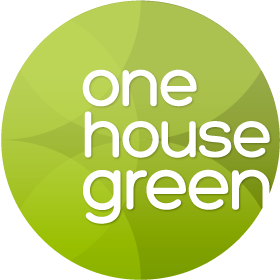In terms of energy, houses are in a balance. The energy entering is equal to the amount of energy leaving. They are however usually found in different forms.
Ways energy can enter our houses:
Purchased: Most commonly seen on our gas or electric bills, but can also be in the form of propane and wood.
Solar Energy: The sun shining on the building enters through walls roves, and windows.
Internal: These thermal gains can be attributed to the occupants themselves, lights, and appliances.
Ways energy can leave our houses:
Energy transfer happens in three ways, convection, conduction, and radiation.
Convection: Occurs in fluids (air is technically a fluid), and is best described as heat rising. Open windows, and air leaks in our building envelop, can all be ways for energy to escape through convection.
Conduction: Occurs within a solid, where the molecules become excited by a heat source and transfer their energy to adjacent molecules causing them to become excited as well. Think of a frying pan on a stove element. Thermal bridging of building materials most commonly wood studs conducts heat from the inside to the outside.
Radiation: Occurs through space. The heat of a fire can radiate to and be felt by someone sitting in an adjacent chair. Heat can be radiated though some building materials, glass as an example.
By understanding these properties of energy and the inherent properties of the building materials we can begin to design spaces with materials in mind that will. Firstly resist the transfer of heat (from ht to cold) but also secondly use the thermal characteristics of these materials to store and eventually radiate back into the space this stored energy. This concept is referred to as thermal mass and it is based on the idea that the more dense a materials is, the more energy to can hold. Materials such as concrete, stone, rock, and brick, as well as water. Can hold this energy for considerable amounts of time and slowly release it back into the living space when required.
The catch is that to use thermal mass as a storage system, you need to build with passive solar gains in mind, you need to have the power of the sun on your side to assist with the heating of the mass. As well you need to build with something other than wood.
Wood is the most common of building materials, and while its benefits are great. It is readily available, cost effective, easily manipulated on site, and has a large knowledge base of people able to work with it. Wood as a material has a very low thermal mass, and consequently allows heat to transfer through it at an alarming rate. By building with an all be it, considerably more expensive material like concrete, we can design a space to perform and not just be. Properly designed a space consisting of the right amount of thermal mass can greatly regulate the vast swings in temperature that we experience in Calgary. The nature of thermal mass is that it takes time to do everything, it takes some time to warm up, and it takes some time to cool down. If you think of a sign wave from grade 10 math, it helps to buffer or reduce the extreme highs and lows of the wave, leaving us with a more constant and comfortable living environment year round. Heat flow


